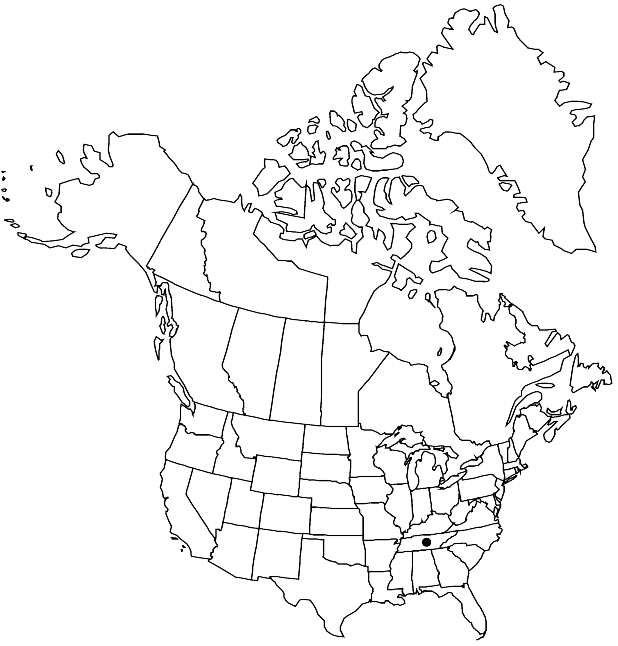Paysonia stonensis
Novon 12: 381. 2002.
Annuals; densely hirsute, trichomes simple proximally, densely pubescent distally, trichomes simple, or mixed simple, forked, and slightly branched. Stems erect, outer ones usually decumbent at base, 2–4 dm. Basal leaves: blade 3–6 cm × 8–15 mm, margins lyrately lobed to pinnatifid, (lobes) entire or sinuate-dentate (lateral lobes decurrent on leaf-rachis, triangular to broadly oblong, terminal lobes ovate to nearly orbicular, relatively large, apex obtuse), surfaces densely hirsute (abaxial with simple, relatively long trichomes, mixed with forked or branched, shorter ones, adaxial with simple trichomes). Cauline leaves: blade broadly oblong to ovate, 1–5 cm × 5–15 mm, base auriculate, clasping, margins dentate, (proximal surfaces densely hirsute, abaxial with simple, forked, and branched trichomes, adaxial with predominantly simple ones, distal surfaces densely pubescent, trichomes predominantly forked or branched). Fruiting pedicels divaricate-ascending, straight, 10–25 mm, densely pubescent. Flowers: sepals 4.5–5.5 × 1.5–2 mm, (outer pair slightly saccate, inner pair narrower, not saccate), pubescent; petals white, (claw pale-yellow, short), 7–9 × 5–6 mm, apex rounded to emarginate; filaments dilated basally, (glandular tissue continuous, surrounding insertion point of single stamens, subtending that of paired stamens). Fruits subsessile, subglobose, slightly didymous, 3–5 × 4–5 mm; valves densely hirsute, trichomes simple; replum orbicular or suborbicular (slightly wider than long, rounded at apex); septum usually perforate, sometimes complete; ovules 8–12 per ovary; style ca. 2 mm, hirsute at least proximally; stigma expanded. Seeds oval, 1.8–2 × 1.5 mm. 2n = 16.
Phenology: Flowering Mar–May.
Habitat: Flood plains, knoll tops, pastures, fields, roadsides, stream banks
Discussion
Of conservation concern.
Paysonia stonensis has a very limited distribution in the watershed of the East Fork of the Stones River, where it is known to form hybrids with P. densipila. The hybrid has been named Lesquerella ×maxima Rollins.
Paysonia stonensis is in the Center for Plant Conservation’s National Collection of Endangered Plants.
Selected References
None.
Lower Taxa
"elongated" is not a number."thick" is not a number."dm" is not declared as a valid unit of measurement for this property.
